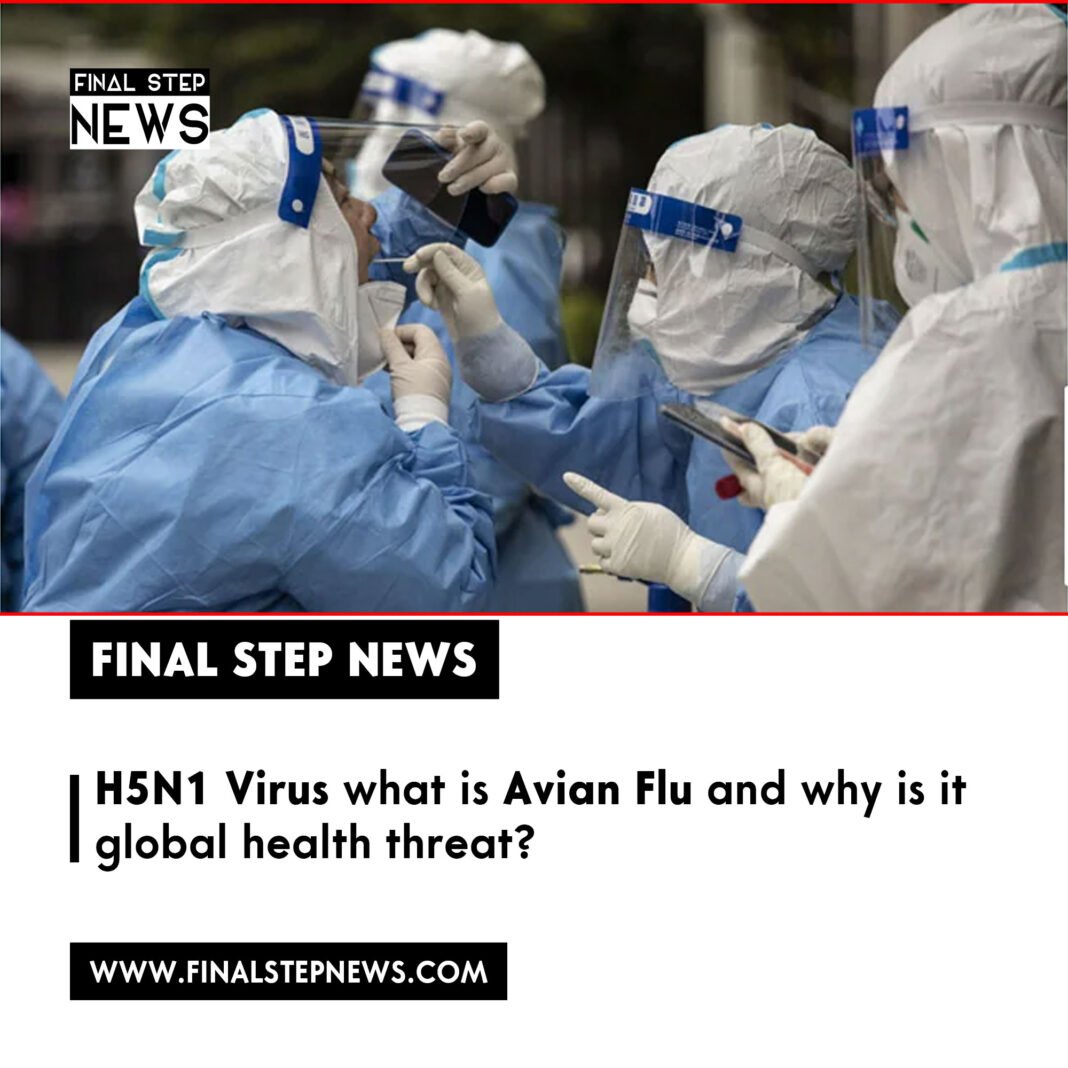Avian Influenza Outbreak: This article explores the causes, prevention measures and important updates on the development of this virus.
Avian influenza commonly referred to as bird flu has resurfaced as a significant global health threat in 2024. The United Nations reports that the Highly Pathogenic Avian Influenza (HPAI) H5N1 strain has spilled over into wildlife affecting more than 500 bird species and at least 70 mammal species. The virus has now been detected in 108 countries across five continents impacting even endangered species like the California condor and polar bears. Notably in January 2024 bird flu was found in gentoo and King penguins in Antarctica for the first time.
In India isolated outbreaks of bird flu in northern states have raised concerns about public health prompting authorities to take stronger measures to prevent the disease from spreading. The virus ability to mutate and adapt makes it a notable zoonotic threat potentially infecting humans under certain conditions. This article explores the causes, prevention strategies and key updates regarding this evolving virus.
How Avian Influenza Spreads
Avian influenza is highly contagious and spreads through direct contact with infected birds or their secretions such as saliva, feathers and feces. The H5N1 virus can also become airborne in certain conditions particularly in enclosed spaces like poultry farms or live bird markets making densely populated areas more vulnerable.
How Avian Flu Spreads in Humans
Touching contaminated surfaces. Inhaling particles carrying the virus. Consuming undercooked poultry or eggs from infected birds.
Key Causes of Bird Flu Spread
Wildlife Spillover
The avian influenza virus has started infecting mammals and wild species significantly increasing the risk of human infections through indirect exposure.
Global Health Threat
The virus spread to 108 countries highlights the risks posed by global trade and travel which can facilitate rapid transmission.
Poultry Industry Practices
Large scale poultry farming and inadequate biosecurity measures are critical factors in the spread of bird flu.
Seasonal Migration of Birds
Migratory birds can carry the virus across continents spreading avian influenza to domestic poultry and other species.
Improper Cooking Practices
Consuming undercooked poultry and eggs can lead to transmission of the H5N1 virus.
Prevention Tips for Bird Flu
Preventing avian influenza requires collective action from individuals, communities and institutions. Here are seven key strategies to protect yourself and your family:
Avoid Contact with Live Birds
Refrain from visiting live bird markets or poultry farms especially in areas experiencing outbreaks.
Cook Poultry and Eggs Thoroughly
Ensure all poultry products are cooked to high temperatures to eliminate the H5N1 virus.
Practice Hand Hygiene
Wash hands with soap and water after handling poultry or visiting high risk areas.
Use Personal Protective Equipment
People working in poultry farms or healthcare settings should wear masks, gloves and other protective gear.
Maintain Clean Environments
Regularly disinfect surfaces that may come into contact with bird droppings or raw poultry.
Stay Informed
Follow updates from trusted sources such as the World Health Organization (WHO) and the Food and Agriculture Organization (FAO).
Limit Interaction with Wild Birds
Avoid feeding or handling wild birds to minimize exposure risk.
Signs of Avian Flu Infection in Humans
Early detection of bird flu symptoms is crucial for timely treatment and containment. Seek immediate medical attention if you or someone you know shows these symptoms especially after exposure to high risk environments:
High fever above 100°F (37.8°C) severe cough and sore throat. Difficulty breathing or shortness of breath. Muscle aches and fatigue. Nausea, vomiting or diarrhea. Eye infections or conjunctivitis in some cases. Rapidly progressing respiratory distress
Can Avian Flu Cause a Global Health Threat?
The WHO has raised concerns over the evolving nature of the H5N1 virus which may eventually mutate to enable human to human transmission. While this is rare, such a change could lead to a global pandemic, highlighting the importance of robust surveillance and preventive measures. Bird flu presents significant risks to human health, including the loss of poultry, cross-species infections and direct threats to humans.
Economic Impact
Avian influenza outbreaks often lead to mass culling, causing substantial losses to the poultry industry.
Ecosystem Disruption
Infection in species like polar bears and penguins shows how avian flu can disrupt biodiversity.
Vaccination Efforts
While vaccines for poultry are being developed and deployed in several countries human vaccines are still in experimental stages.
Avian influenza remains a critical global health concern, with the potential to impact wildlife, poultry and human health. Understanding the transmission of avian flu and adopting effective prevention measures can help reduce risks. With vigilance, proactive actions and focus on public health the dangers posed by the mutating H5N1 strain can be minimized.







